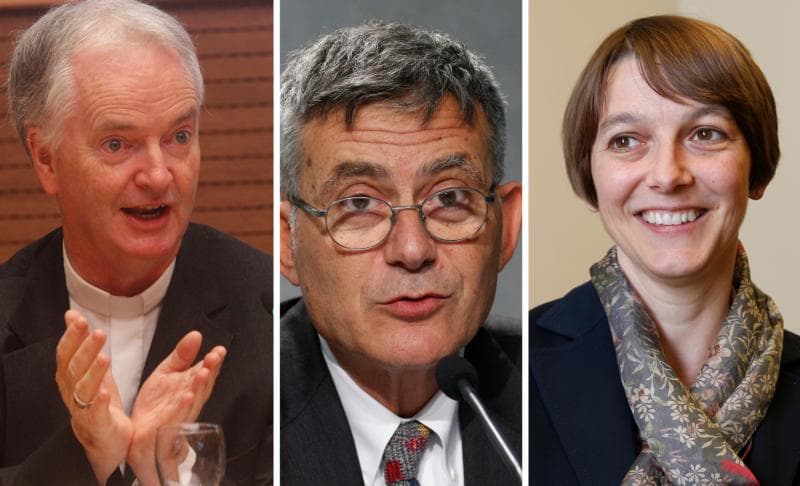WASHINGTON, D.C. — When Vatican communication leaders met virtually with U.S. and Canadian Catholic journalists and communication leaders June 30, they urged the group to keep up their work, think of new ways to have a broader reach and not get weighed down by society’s current polarization.
“We have something to bring” to the modern world “and a huge amount to learn” from it, said Bishop Paul Tighe, secretary general of the Pontifical Council for Culture. The bishop, who has addressed this group in person at previous events, is a past secretary of the former Pontifical Council for Social Communications.
He was joined in the virtual panel by Paolo Ruffini, prefect of the Vatican Dicastery for Communication, and Natasa Govekar, director of the dicastery’s theological-pastoral section, which coordinates Pope Francis’ Instagram page.
The Vatican officials had a simple message, urging the group above all to really engage with readers, viewers and social media followers.
Ruffini stressed that communication is about relationships, which the other panelists also echoed. Govekar emphasized that a key part of communication is not just getting the word out but listening.
The panel addressed the opening session of the Catholic Media Conference via a Zoom call, replacing the session that would have kicked off the gathering this year in Portland, Oregon, which was canceled due to the coronavirus. Some workshops and other parts of the annual conference were available to participants in an online format.
The group of journalists and communication leaders asked some poignant questions in the chat section that were conveyed to the panelists such as: How would they advise diocesan leaders during a time of budget cuts related to COVID-19 not to do away with Catholic media, and what words of encouragement could they offer to this group during a time of increased polarization?
In response to the question about keeping diocesan communications going, Tighe said: “No diocese should not be active in communication.”
“If we have faith, we will find the resources,” he added.
Answering the polarization question, panelists advised the group to pray, spread love, not hate, and be sure to keep a sense of humor.
Ruffini said communicators need to learn how to dialogue and listen to those inside and outside the church without looking at others as the enemy. He stressed that the job of communicators is to unify, saying: “That is what we have to do.”
To do this well is not without risk, warned Tighe, who urged the group not to be frightened by modern culture but to get out there and engage with it. “Listen and respond,” he said almost in pep-talk fashion.
And when it comes to the ever-pervasive social media, the bishop advised the communicators to participate, but not to let it become who they are, always keeping the priority of sharing the good news as a barometer in their role as Catholic communicators.
These same themes came across in a message to the group from Pope Francis, read by J.D. Long-Garcia, senior editor of America magazine and CPA president, at the start of the conference’s opening session.
“Catholic media outlets in the United States are called to break down barriers that prevent dialogue and honest communication between people and communities,” the pope said. He also urged the group to serve as an inspiration of the ideal of unity amid diversity “in an age marked by conflicts and polarization from which the Catholic community itself is not immune.”
“We cannot truly communicate unless we become personally involved, unless we can personally attest to the truth of the message we convey,” the pope told them.













